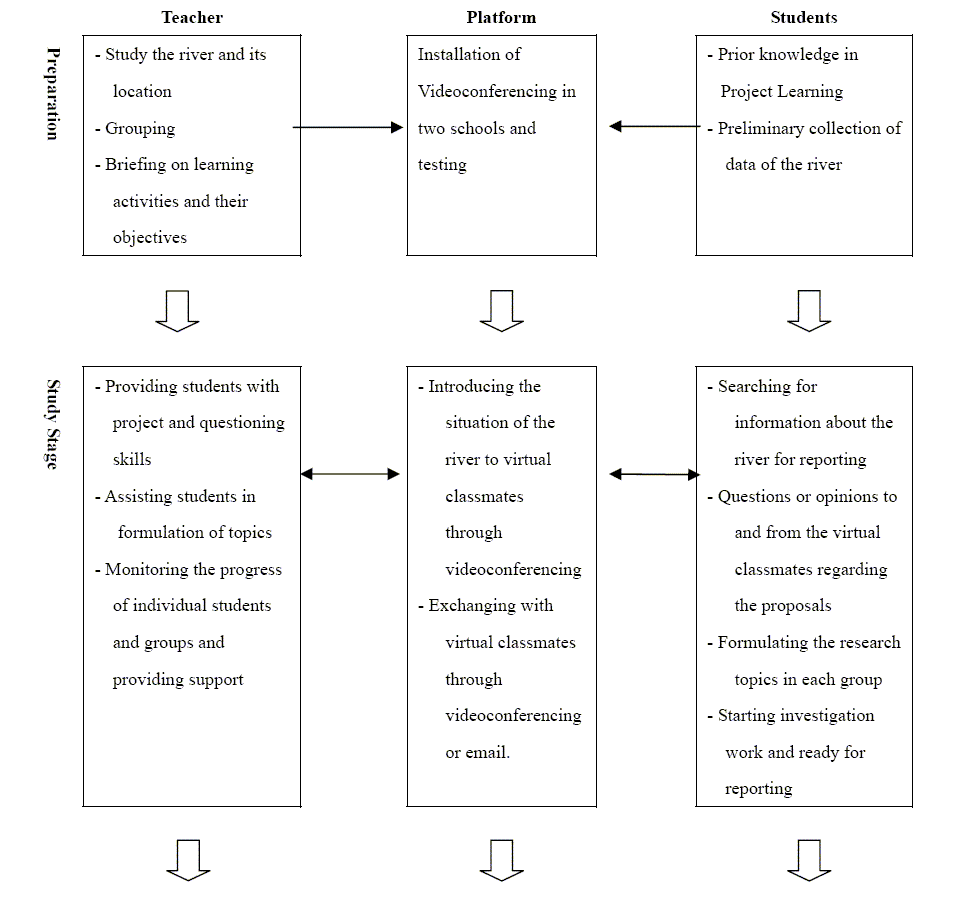Asia-Pacific Forum
on Science Learning and Teaching, Volume 10, Issue 2, Article 15
(Dec. 2009) |
Using videoconferences for distance teaching to meet the increased demands of learning is becoming more popular. The use of technology in teaching and learning has long been encouraged in education, especially in the recent development of information and communication technology (Education and Manpower Bureau, 1988). The types of technology range from the radio in 1920 to the most powerful microprocessors today. At large social events, such as concerts or football matches, where the crowd may consist of thousands of people, videoconferencing would be one of the many strategies used to meet the desire of the audience.
Videoconferencing is now widely used in broadcasting, business and scientific research. However, it is not that popular in school settings, especially in the classrooms among the junior secondary form students, due to the limited manpower and resources provided to schools in public sector. On the other hand, using videoconferencing in teaching and learning science, like when the teachers and students of two Hong Kong secondary schools used technology to interact and communicate, is often considered trendier. Thus, videoconferencing plays an important role in paving the path for a new era to rise, in which the learning and teaching platform is not only inter-disciplinary, but also inter-district or even international. The scale for such a platform is usually small and limited to several venues within the same campus or area.
The students in this study were involved in a computer-supported collaborative learning project between two secondary schools in two different districts with an aim to explore different effective ways to improve the water quality through the exchange of ideas and experiences through a distance learning approach.
In order to connect the videoconferencing capabilities among two or more schools, a P4 or above personal computer with 1Gigabyte RAM on a Windows XP platform is needed. An 8 channels audio mixer, a PCI 1394 cord, a DV (or 3CCD), two speakers and a high transmission rate with more than 3 Megabyte bandwidth are also essential.
Students from School A in Wong Tai Sin felt annoyed by the smell from a nullah, which was later learned to be the Kai Tak River, just adjacent to their school. Some of the students were concerned about the effect of the bad smell on their health and others worried about environmental pollution. The school had prior experience of videoconferencing with a primary school in the same district on the topic of acids and alkali, and with a secondary school in Malaysia during a student debate competition. The principal was looking for more opportunities to communicate with other secondary schools across districts. School B in Tin Shui Wai, a newly developed area in the north-west part of the New Territories, was sited as a remote area away from the central district of Hong Kong. The teacher-in-charge in School B wanted her students to have more exposure and wanted to link up with other schools in the urban areas. In this regard, officers from the Education Bureau tried to match these two schools and met with the two teachers-in-charge. After the first meeting, the teachers agreed to collaborate and do something about a nullah near their schools as their common topic. They drew up the initial collaborative project plan involving the students and the exchange platform (Fig.1). A class of Secondary Form 1 students from each of the two schools was chosen for this pilot study. During the first contact, students were advised to make use of videoconferencing to (i) introduce the history and location of their own water channel, (ii) identify the problem or disturbance created by the nullah and (iii) and suggest solutions to improve the water quality of these two water channels. Teachers from each school returned to their school and facilitated their students’ work on the history and the problem of their own nullah by reviewing the literature and any relevant information. They also took video-clips and collected information about the geographical features of the nearby areas of the water channel where water sample was collected.
Figure 1. The initial collaborative project plan
With the installation of videoconferencing facilities for distance teaching, students from the two schools benefited from the exchange of data and opinions. The aim of this research is to study the learning outcomes among the Secondary Form 1 students from two secondary schools in two different Hong Kong districts through the use of videoconferencing as a tool to learn about water pollution. Through these conferences, students are expected to share or borrow ideas from their counterparts in another corner of the city to improve the quality of the water and the environment around their school campuses.
The reason for conducting this collaborative project was to improve the water quality of the nullahs in the two areas with the cooperation of groups of students from two secondary schools. Some of their proposals would be submitted to the government departments for careful consideration. If the project is a success, it could then be used as a model for other schools as a collaborative effort in improving the quality of environment through the use of videoconferencing to exchange the ideas and opinions.


